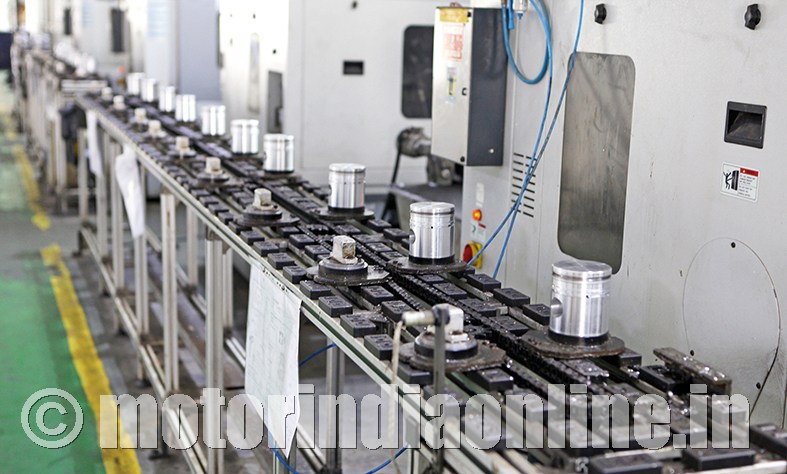The demand for auto components from domestic original equipment manufacturers (OEMs), especially the high volume two-wheeler and passenger vehicle industry, which together constitute about two-third of the overall ancillary industry size, has remained strong in Q3FY2018. Moreover, the stellar growth in the CV as well as tractor segment has further supported the overall volume growth.
According to an ICRA note on the industry, given the indicative trends the growth momentum is expected to sustain in Q4FY2018 as well. This will be strongly supported by the improved demand outlook in the key end-user segments as well as the expected pick-up in rural income. Going forward, pick-up in infrastructure activity will further drive growth in construction & mining equipment as well as the tipper segment (classified under M&HCVs).
Says Mr. Subrata Ray, Sr. Group Vice President, Corporate Sector ratings, ICRA: “During Q3FY2018, auto component vendors dependent on the CV and two-wheeler segments witnessed double-digit growth in volume, which, along with improved realization due to increase in commodity prices, resulted in strong revenue growth. However, while domestic PV demand remained strong, muted PV exports dragged the overall PV production volume growth during the last two quarters. We expect PV exports-related aberration to abate during the coming quarters, and it will be more than offset by the robust demand momentum in the domestic market, effectively supporting auto component demand.”
With 25% contribution to the overall auto components exports from India remain significant. Together the US and EU markets have accounted for 60% of total auto component exports from India. With the US heavy commercial vehicle (HCV), especially class-8 trucks witnessing strong order inflow (+49.7% Y-o-Y) during CY2017, the benefits of improved order inflow have already started accruing to component suppliers for the US HCV market. Consequently, exports to the US CV space is expected to grow over the near term. The European PV and CV registration numbers too have witnessed marginal growth in CY2017. However, the outlook for this geography is relatively muted.
ICRA’s sample of 48 auto ancillaries, comprising around 26% of the industry’s turnover, grew 18.5% revenue-wise during Q3 FY2018. The same appeared stronger on low base of last fiscal, where overall performance was impacted by demonetization. Overall, during 9MFY2018, the sample space grew by 12.3% which was better than the earlier 9-11% growth estimate for FY2018. Given strong revenue growth, the growth estimates have been revised upward for FY2018 to 13-15%.
Though rising commodity price trends over the last 4-5 quarters has pressurised profitability of auto ancillaries due to Y-o-Y increase in RM expenses, most players have been able to offset the commodity pressure by improved operating leverage benefits. Over the last two quarters, vendors dependent on M&HCV and 2W have performed well with most of them registering double-digit growth in revenue.
Several auto ancillaries, especially those dependent on steel, have also witnessed Y-o-Y decline in raw material cost during Q3FY2018, due to range bound steel prices over the last 2-3 quarters and ancillaries ability to pass on price escalation to its customers (OEMs) in the interim. Overall, OPM of sample space expanded by 41 bps Y-o-Y to 14.1% primarily driven by improved operating leverage. Over the same period, OPM of tyre companies in ICRA’s sample declined by 37 bps Y-o-Y which was more than offset by 73 bps expansion in OPM of non-tyre companies.
ICRA expects industry-wide credit trends to remain stable, supported by robust demand from the OEM segment in the near term, supported by healthy cash accruals, gearing as well as coverage indicators for the industry have improved considerably over the past two years. This, despite the fact that the industry has been on a consolidation mode over the last two years, taking steps towards deleveraging their balance sheet, given the surplus capacity. However, select OEMs are exploring inorganic growth opportunities in India as well as in the overseas market to support growth as well as diversify its clientele and product portfolio.
Ancillaries continue to focus towards moving up the value chain to mitigate profitability and competitive pressure in the intensely competitive industry. Incremental investments by auto ancillaries are primarily towards new order/platform-related requirement or debottlenecking of the existing capacity. A few have started investing keeping in mind the requirements for BS VI (in 2020), CAFE norms and electric vehicles in 2030.
As for the industry outlook, Mr. Ray adds: “ICRA research has revised upward its revenue growth estimate from 9-11% to 13-15% for FY2018 in the backdrop of robust growth expectation in domestic PV, CV, tractor and 2W segment. Revenue growth will be also supported by the steady increase in commodity prices and consequent impact on the realization. Considering the increasing content per vehicle due to technological advancement as well as regulatory measures (emission, safety regulations), the growth in the auto component industry will be relatively higher than the underlying growth in the automotive industry in the medium to long term. The revenue growth of auto ancilliaries is expected to be at 11-13% for FY2019, given healthy growth expected across key automotive sub-segments as well as the commodity price impact on realization. We maintain our 10-12% long term (5 year) CAGR expectation for the Indian auto component industry.”
Over the medium to long term, growth in the auto component industry will be higher than the underlying automotive industry growth, given the increasing localisation by OEMs, higher component content per vehicle and rising exports from India. In line with ICRA’s previous forecast, the operating margin dipped below the 15% level during FY2017, and it is likely to moderate further in FY2018. The same is expected to be ~13-13.5% in the medium term as compared to the earlier sub-12% level witnessed prior to FY2012 owing to a richer product mix and rising revenues from the profitable aftermarket segment.
